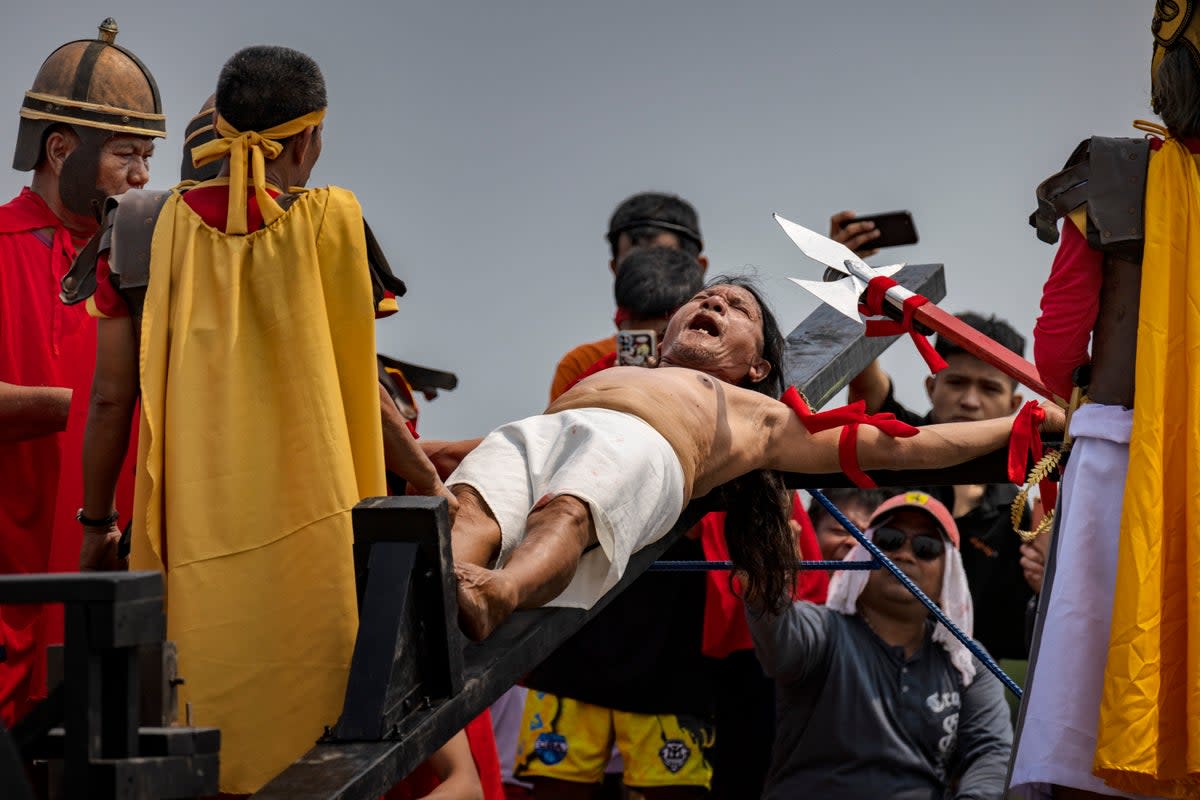Gory Easter crucifixion re-enactments resume in Philippines despite Church’s pleas

A Good Friday tradition will see at least 12 Filipinos getting nailed to crosses in the Philippines as they reenact Jesus Christ’s suffering for the first time in three years due to the Covid-19 pandemic, with the spectacle expected to draw hundreds of devotees and tourists.
It is the 34th annual crucifixion taking place involving San Pedro Cutud and two other nearby farming villages, organisers have said.
About 20,000 foreign and Filipino tourists and devotees will gather for the event, according to the organisers. On the sidelines, villagers peddle bottled water, hats, food and religious items and there will be a significant police presence to keep order.
The 12 men who will participate in the real-life crucifixions in Pampanga province, north of Manila, include 62-year-old sign painter Ruben Enaje.
“I really want to retire from this because of my age, but let’s see if my body can still bear the pain next year,” the sexagenarian said a few days before the crucifixions as he hoped to use the extraordinary penance.
Even though Mr Enaje has been portrayed as among the bravest men in the world for the annual feat, fears and doubts always creep in, he told the Associated Press.
“But to be honest, I always feel nervous because I could end up dead on the cross,” the father of four said.
“When I’m laid down on the cross, my body begins to feel cold. When my hands are tied, I just close my eyes and tell myself: ‘I can do this. I can do this.’”
Mr Enaje first decided to participate in the gory reenactment after he miraculously survived unscathed after falling from a three-story building in 1985.
The 62-year-old, along with 11 other men, will wear a thorny crown of twigs and carry a heavy wooden cross on his back for more than a kilometre under the scorching heat.
In the same reenactment, village actors will dress up as Roman centurions and hammer 10cm (4in) stainless steel nails through his palms and feet.
He will be then set aloft on a cross under the sun for about 10 minutes.
Elsewhere in the ritual, other penitents will walk barefoot through village streets while beating their bare backs using sharp bamboo sticks and pieces of wood.
This spectacle is part of the Philippines’ unique brand of Catholicism, where church traditions are mixed with folk superstitions. The mostly impoverished penitents undergo the ritual to atone for sins, pray for the sick or for a better life, and to give thanks for miracles.
Church leaders in the archipelago have criticised the annual display, reasoning that Filipinos can show their deep faith and religious devotion without hurting themselves and engaging in charity work instead, such as donating blood.
Bloodied rites reflected the church’s failure to fully educate many Filipinos on Christian tenets, leaving them on their own to explore personal ways of seeking divine help for all sorts of maladies, said Robert Reyes, a prominent Catholic priest and human rights activist in the country.
“The question is where were we church people when they started doing this?” he asks and adds that the clergy should immerse itself in communities more and converse regularly with villagers.
“If we judge them, we’ll just alienate them.”
